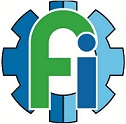Improvement of Soundscapes Based on Noise Control in Urban Forest as an Effort to Fulfill Quality of Green Open Space Standards
Abstract
Keywords
Full Text:
PDFReferences
P. N. Breysse and P. S. Less, Noise, New York: John Hopkin’s University, 2006.
J. J. Eggermont, Nonauditory Effects of Noise, Noise and the Brain, pp. 266300, Jan. 2014.
Bennet Brigitte, The Soundscape Standart, Hamburg: INTERNOISE, 2016.
J. Budel, ”Creative Response to Soundscape Ecology : Innovative Framework and Case Study,” in Proceedings of the ACMC/AFAE Conference, Brisbane, Australia, 2016, pp. 21-28.
A. Swain, ”Active noise control: Basic Understanding,” Odisha, 2014.
G. d. l. T. Rovira, Active Noise Cancellation, Barcelona: Universitat Politecnica De Catalunya, 2017.
R. Chanaud, Sound Masking Done Right: Sinple Solution for Complex Problem, 1 ed., United States of America: Atlas Sound, 2008.
J. Cai, J. Liu, N. Yu and B. Liu, ”Effect of water sound masking on perception of the industrial,” Applied Acoustic, no. 150, pp. 307-312, 2019.
A. Widyatama, A. Hidayatno and A. A. Zahra, ”Improving Sound Signal Quality Using Microphone Modeling with Convolution and Deconvolution Methods” Semarang, 2010.
Y. Soeta and R. Shimokura, ”Sound quality evaluation of air conditioner based of factor on the autocorrelation function,” Applied Acoustic, no. 124, pp. 11-19, 2017.
Z. Deng, A. Liu and J. Kang, ”Linear Multivariate Evaluation Models for Spatial Perception,” Acoustical Society of America, pp. 2860-2870, 2015.
S. D. Snyder, Active Noise Control Primer, New York: Springer, 2000.
S. Suyatno, H.A. Tjokronegoro, I.G.N. Merthayasa, R. Supanggah, ”Analysis of Onstage Acoustics Preference of Musicians of Traditional Performance of Javanese Gamelan Based on Normalized Autocorrelation Function,” Engineering and Technology, vol. 48, no. 5, pp. 571-583, 2016.
L. Inayah, Suyatno, and S. Indrawati, Classification and Identification of Urban Forest Soundscapes (Study of the Reached Green Open Space Standard), in Proceedings of the EduARCHsia Senvar 2019 International Conference (EduARCHsia 2019), 2020, pp. 27.
DOI: http://dx.doi.org/10.12962%2Fj24604682.v18i1.12040
Refbacks
- There are currently no refbacks.

This work is licensed under a Creative Commons Attribution-ShareAlike 4.0 International License.







